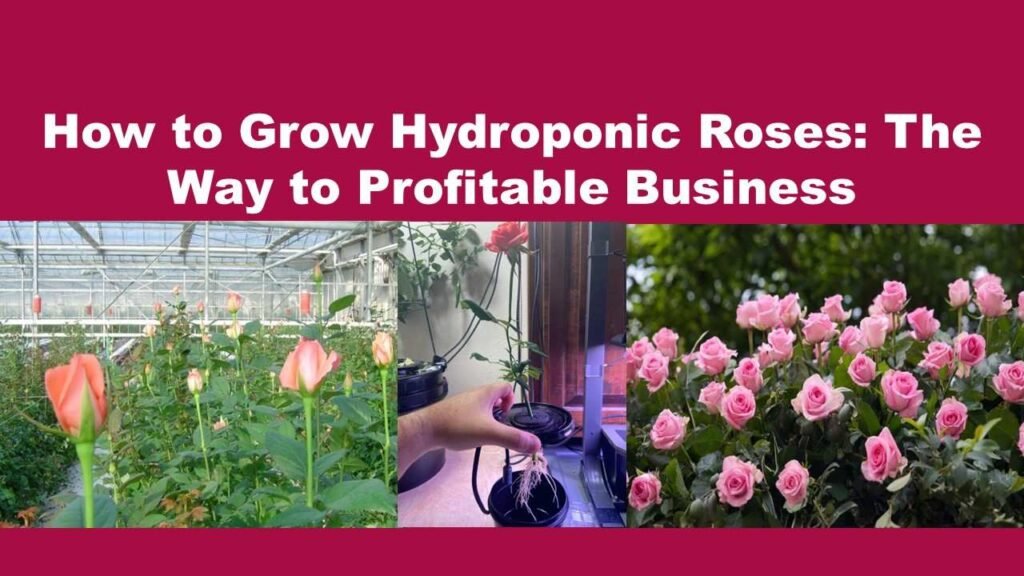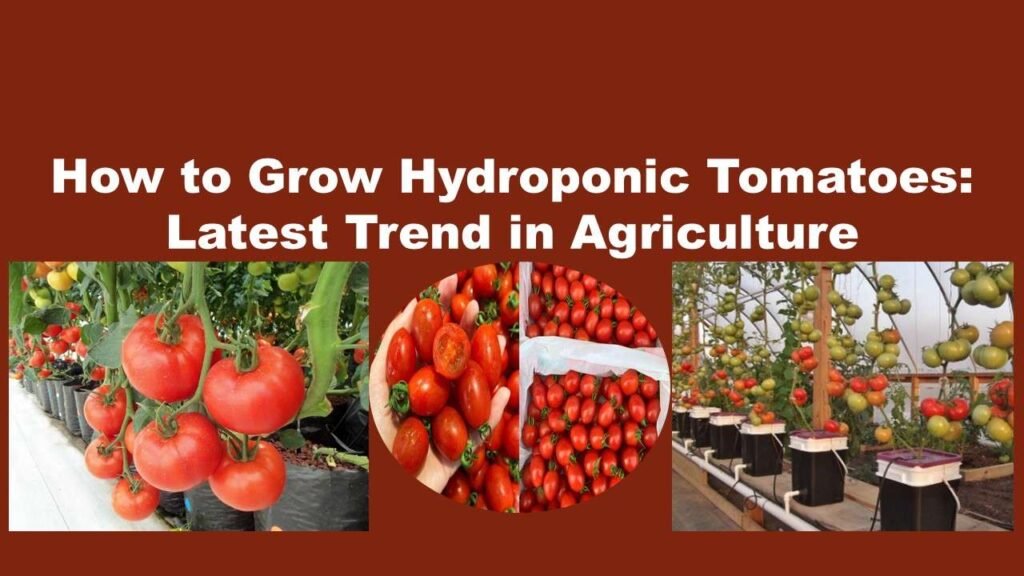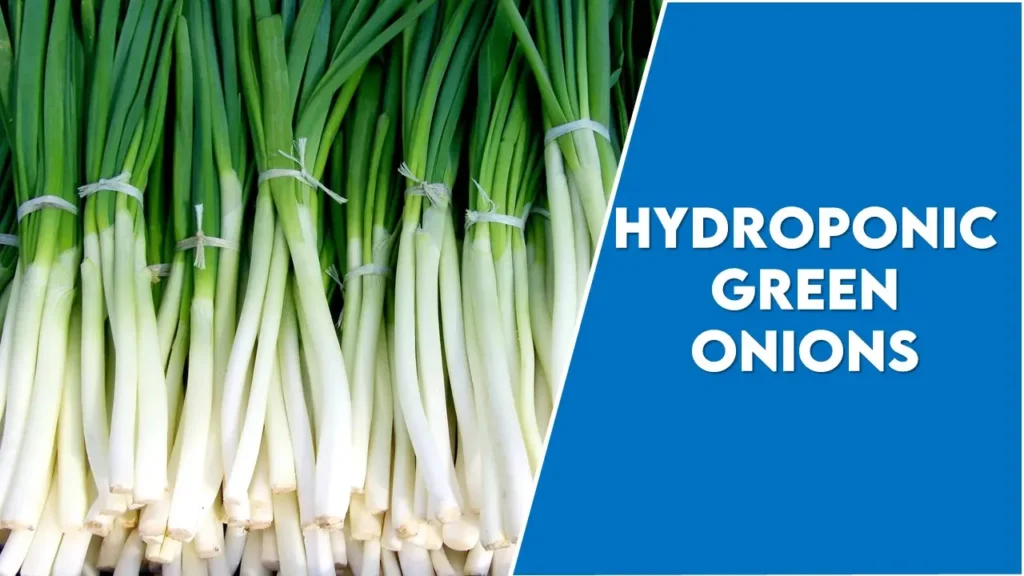How to Grow Watermelon Hydroponically: Bountiful Production
Watermelon (Citrullus lanatus), a member of the Cucurbitaceae family, is an annual plant with sprawling vines, angular stems, and deeply lobed leaves. Originating possibly in Africa, it has been cultivated for millennia, spreading worldwide through trade routes. The fruit, a pepo berry, typically boasts a smooth green rind with red, pink, or yellow flesh, though varieties vary widely, as research continues different colors are integrated in watermelon which has different types of antioxidants and different health benefits. How to grow watermelon hydroponically involves growing watermelon plants without soil, using nutrient-rich water solutions to provide essential minerals and elements directly to the roots.
Importance of Watermelon:
The importance of watermelon is beyond the economic, as it is nutritionally a high nutritive fruit. Its nutritional importance is very high as it contains a lot of antioxidants and vitamins and minerals fibers, which are most required by the body. Due to its nutritive qualities its economic importance increased. As in today’s generation all things are eaten on the basis of importance. Everyone is now checking the nutritive qualities and these things make the beneficial fruits demand to a peak level.
| Nutrient | Amount per 100g |
| Calories | 30 kcal |
| Water | 91.45 g |
| Protein | 0.61 g |
| Carbohydrates | 7.55 g |
| Fiber | 0.4 g |
| Sugars | 6.2 g |
| Fat | 0.15 g |
| Vitamin C | 8.1 mg (14% DV) |
| Vitamin A | 569 IU (11% DV) |
| Potassium | 112 mg (3% DV) |
| Magnesium | 10 mg (3% DV) |
| Calcium | 7 mg (1% DV) |
How to Grow Watermelon Hydroponically | how to grow hydroponics watermelon
Suitable Varieties of Watermelon for Hydroponics:
| Variety | Fruit Characteristics | Why Suitable for Hydroponics? |
| Sugar Baby | Small, round fruits | Compact size and shorter growing season |
| Crimson Sweet | Medium to large fruits | Well-adapted to controlled growing conditions |
| Charleston Gray | Large, oblong fruits | Requires more space, but excellent flavor and yield |
| Mini Love | Small-sized fruits | Perfect for hydroponic systems with limited space |
| Yellow Doll | Small to medium-sized fruits | Unique flavor and visual appeal, suitable for small spaces |
Setup the Hydroponic System:
- Container: Use large containers or grow beds to accommodate the watermelon plants. Ensure the containers have adequate drainage.
- Reservoir: Set up a reservoir to hold the nutrient solution. This should be placed below the containers to allow for gravity-fed irrigation in drip systems.
- Tubing and Pump (for drip system): Install tubing to deliver the nutrient solution from the reservoir to the plants. Use a submersible pump to circulate the solution.
- Growing Medium: Choose a suitable growing medium such as perlite, coconut coir, or a hydroponic-specific medium. Ensure it provides good aeration and support for the plant roots.
Choosing a Hydroponic System:
- Deep Water Culture (DWC): This involves suspending the plant’s roots in a nutrient solution. Watermelons can thrive in DWC systems, but ensure the containers are large enough to support their growth.
- Drip System: A drip system delivers a nutrient solution directly to the plant’s roots.
Seed Germination and Transplanting:
- To promote germination, soak the seeds overnight to soften their coats. Then, choose a suitable germination medium like rockwool cubes or oasis cubes, ensuring it stays moist without becoming waterlogged. Aim for a temperature range of 75-85°F (24-29°C) for optimal germination, and provide sufficient light once seeds have sprouted, either through natural sunlight or grow lights. Watermelon seeds typically germinate within 4 to 10 days under optimal conditions. Once sprouted, carefully transplant seedlings with their first true leaves into the hydroponic system, ensuring they receive proper support and nutrient solutions tailored to their growth stages.
Preparation of Nutrient Solution:
“how to grow watermelon hydroponically” by using a quality nutrient solution is mentioned below”:
- Water Quality: Start with clean, pH-balanced water. Ideally, use reverse osmosis (RO) or dechlorinated water to prevent any harmful chemicals or minerals from affecting plant growth.
- Nutrient Mix: Choose a hydroponic nutrient solution formulated specifically for fruiting plants like watermelons. These solutions contain a balanced blend of macronutrients (nitrogen, phosphorus, potassium) and micronutrients (calcium, magnesium, iron, etc.) necessary for healthy growth and the amount of these can be checked from the governmental sites or it can be recommended by many scientists.
- Mixing Ratios: Follow the manufacturer’s instructions to mix the nutrient solution with water. Typically, you’ll dilute the concentrated solution to achieve the desired nutrient concentration. The specific ratios may vary depending on the growth stage of the watermelon plants.
- pH Adjustment: Measure the pH of the nutrient solution using a pH meter or test kit. Watermelons prefer slightly acidic conditions, with an optimal pH range of 6.0 to 6.5. Adjust the pH using pH-up or pH-down solutions as needed to maintain the desired level.
- EC/PPM Monitoring (Optional): If you have an electrical conductivity (EC) meter or a parts per million (PPM) meter, you can also monitor the nutrient concentration of the solution.
- Regular Monitoring and Adjustments: Continuously monitor the nutrient solution’s pH and EC/PPM levels throughout the growing cycle. Adjust the solution as needed to maintain optimal conditions for watermelon growth.
- Replace Regularly: Over time, the nutrient solution may become depleted or imbalanced, so it’s essential to replace it periodically, typically every 1-2 weeks, depending on the system and plant growth stage.
Management of Optimum Conditions:
How to grow watermelon hydroponically by providing these optimum conditions:
| Growing Condition | Optimal Range |
| Temperature | 75-85°F (24-29°C) daytime; 60°F (15°C) nighttime |
| Light | 6-8 hours of direct sunlight daily; supplemental grow lights as needed |
| Humidity | 60-70% |
| Watering | Keep consistently moist, avoiding waterlogging |
| Nutrients | Balanced nutrient solution, higher nitrogen in vegetative stage, more phosphorus and potassium during flowering and fruiting |
| pH Levels | 6.0-6.5 |
| Support Structures | Trellises, stakes, or other support to prevent vines from sprawling and support heavy fruit |
| Pollination | Ensure proper pollination by shaking plants or using a brush to transfer pollen |
Grow Watermelon Hydroponically by Using Support structures :
- Trellises: Install trellises or vertical supports within your hydroponic setup. You can use materials like metal stakes, wooden poles, or PVC pipes arranged in a grid or linear pattern.
- String or Netting: Attach strong strings or netting to the trellises or support structures to create a framework for the vines to climb. As the watermelon vines grow, gently guide them to weave through the strings or netting, encouraging upward growth.
- Pruning: Regularly prune watermelon vines to remove excessive foliage and redirect growth towards fruit-bearing branches.
- Slinging Fruits: As watermelon fruits develop, support them with slings made from soft fabric or mesh material. This prevents the fruits from resting directly on the hydroponic media, reducing the risk of rot and ensuring even ripening.
- Adjustable Supports: Opt for support structures that allow for height adjustment as the watermelon plants grow taller.
- Regular Maintenance: Monitor the growth of watermelon vines and adjust the support structures as needed. Check for any signs of sagging or instability and reinforce the supports accordingly.
Harvesting:
- Monitoring Growth: Regularly monitor the growth of watermelon fruits to track their progress. Keep an eye on their size, color, and overall appearance so that the harvesting stage can be detected on time otherwise over ripening and immature fruits are not well for market purpose.
- Observing Signs of Ripeness: There are signs that indicate the watermelons are ripe and ready for harvest, these are very accurate and help in detection of ripe fruits. These signs include a dull, matte appearance of the fruit surface, a change in color (depending on the variety), and a dried-out tendril near the stem attachment point.
- Tap Test: Perform a tap test by gently tapping the watermelon with your knuckles. A ripe watermelon will produce a dull, hollow sound, while an unripe one will sound firm and solid.
- Check the Bottom: Examine the underside of the watermelon where it rests on the hydroponic media. A ripe watermelon will develop a creamy yellow spot, indicating it’s ready for harvest.
- Cutting the Fruit: Use a sharp knife or pruning shears to cut the watermelon from the vine, leaving a few inches of stem attached to the fruit. Cut carefully to avoid damaging neighboring fruits or the vine itself.
- Harvesting Time: Harvest watermelons in the morning when temperatures are cooler.
Advantages of Growing Watermelon in Hydroponics:
| Advantages | Description |
| Optimized Growing Conditions | Precise control over environmental factors like nutrients, pH, water, and light, leading to faster growth, higher yields, and better fruit quality. |
| Space Efficiency | Vertical or compact configurations maximize space utilization, ideal for urban farming or areas with limited land availability. |
| Reduced Pest and Disease Pressure | Minimized exposure to soil-borne pests and diseases, reducing the need for chemical pesticides and fungicides, promoting healthier crops. |
| Year-Round Production | Controlled indoor or greenhouse environments allow for continuous production regardless of season or climate, ensuring consistent supply to markets. |
| Higher Yields and Quality | Increased yields per unit area with fruits exhibiting more uniform size, shape, and flavor, meeting market demands for premium-quality produce. |
| Minimized Weed Competition | Elimination of soil reduces weed competition and labor associated with weed management, allowing for greater focus on crop maintenance. |
| Environmental Sustainability | Design features like renewable energy use, water and nutrient recycling, and reduced chemical inputs align with sustainable farming practices. |
Disadvantages of Growing Watermelon in Hydroponics:
| Disadvantage | Description |
| Initial Setup Costs | Hydroponic systems can require a significant initial investment in equipment such as pumps, nutrient solutions, and media. |
| Maintenance Requirements | Hydroponic systems require regular monitoring and maintenance of pH levels, nutrient concentrations, and water quality. |
| Susceptibility to System Failures | Mechanical failures or power outages in hydroponic systems can disrupt water and nutrient delivery, affecting plant health. |
| Root System Management | Watermelon plants have extensive root systems that may require careful management to prevent overcrowding or root rot. |
| Lack of Soil Benefits | Hydroponic systems lack the beneficial microorganisms and nutrients found in soil, which can affect plant health and yield. |
| Environmental Control Challenges | Maintaining optimal environmental conditions, such as temperature and humidity, can be challenging in hydroponic setups. |
| Pollination Management | Hydroponic environments may require manual pollination of watermelon flowers, as natural pollinators may not be present. |
| Limited Nutrient Options | Hydroponic nutrient solutions may not fully replicate the complex array of nutrients found in soil, leading to deficiencies. |
| Risk of Waterborne Diseases | Recirculating water systems in hydroponics can be prone to the spread of waterborne diseases, affecting plant health. |
Conclusion:
As we see the importance of watermelon as its nutrients as well as the economical hype it is a very worthy crop to grow in hydroponics. We discussed all the components in “how to grow watermelon hydroponically”. As investment is high in hydroponics the returns must be high. As production increases significantly in hydroponics it increases the returns per unit area. On the other side some important facts to be noted before going for this is that it requires supportive structures which increases the cost of production and also increases the work. For opting such a venture one should see all the pros and cons and prepare a math before investment.







